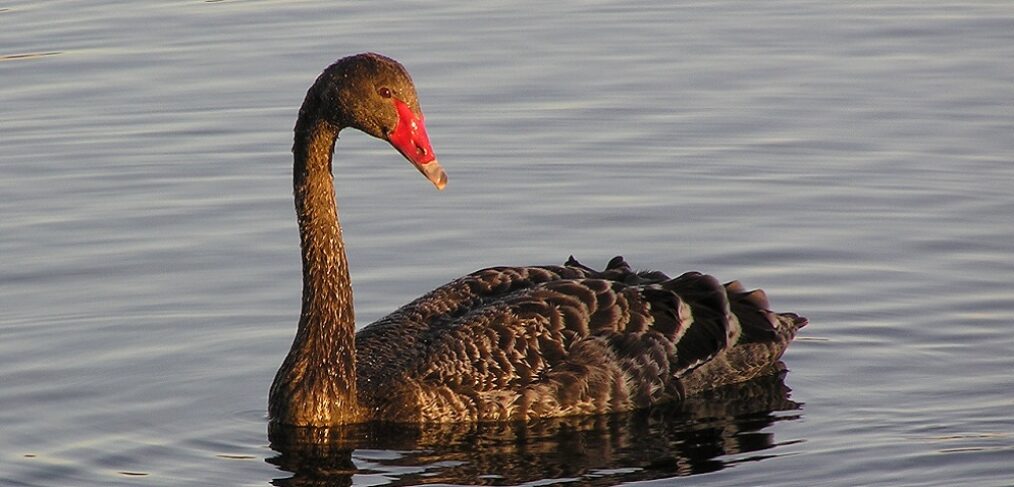
Species of the week #121 – Black Swan
The Black Swan originally comes from Australia. In the meantime, abandoned and escaped animals have developed into a self-sustaining small population. With its elegant swan’s neck and black plumage, it is a popular ornamental bird, especially in parks. The number of wild breeding pairs is estimated at about 20 to 30. Mourning swans even breed in winter. The species is not invasive, i.e. it does not displace any native species, but forms a rare and striking contrast to the ubiquitous white mute swans.
| Distribution status in Rhineland-Palatinate | rare |
| Remaining occurance | Feral animals in Kandel and Kaiserslautern Valley |
| Last sighting | 2018, Kandel |
| Habitat | Vegetated waters |
| Threat | none |
Black swans have 31 neck vertebrae, so they are particularly good at searching for food underwater. The birds are almost completely black, except for the white hand and arm wings. The neck is longer than that of the mute swan; eyes and bill are bright red. There is also a white band at the tip of the bill. The female is slightly smaller than the male, and the fluffy young birds are light grey in colour.
Black swans mainly eat aquatic plants, sometimes also insects.
In winter they also take grain and maize to keep up their strength.
Black swans greet each other by bobbing their heads up and down and calling loudly. They also swim into the middle of a lake, where they place their long neck on the water and “trumpet” audibly to call for a mate or simply to express their displeasure. In their Australian home, the so-called “triumph ceremony” can be observed. A complicated sequence of calls, neck and wing postures, usually started by the male swan and repeated by the female and young swimming in a common circle. It serves mainly to consolidate pair and family relationships and is performed more frequently the more other swans threaten the territory.
Black swans are fond of lakes, estuaries and inland waters. They prefer shallow water with little current. They also seek out flooded areas for food. They are sociable and often travel in large groups; they also nest in colonies. The Black Swans build a large nest mound, usually in the middle of shallow water. They use the same nest every year and only improve it when necessary. Black swans are very loyal to both their mates and their birthplace and stay there for life. Within their habitat, however, they often change location in case of disturbances and depending on the water level.
Click here for more exciting species of the week
Image: From I, Tony Wills, CC BY-SA 3.0, https://commons.wikimedia.org/w/index.php?curid=7814868
